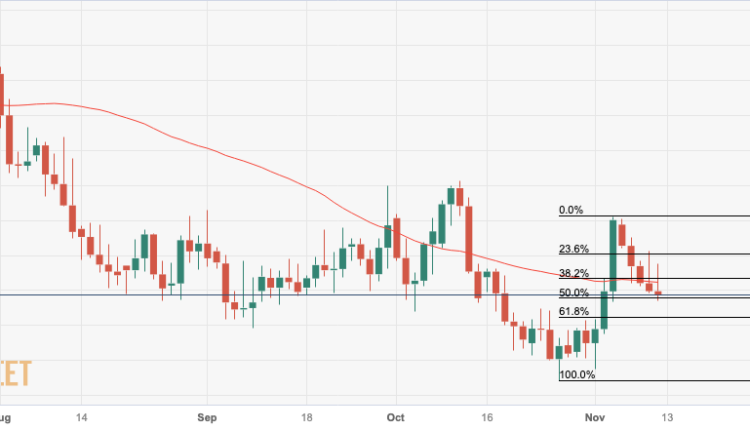New Zealand Dollar continues falling amid worries over global economic growth
- The New Zealand Dollar declines across the board on Friday.
- Kiwi weakness comes from a combination of a negative global growth outlook and US Dollar outperformance.
- Hawkish commentary from Fed Chair Powell set the US Dollar trending higher against the Kiwi, NZD/USD resumes decline.
The New Zealand Dollar (NZD) weakened 0.11% on Friday afternoon (18:00 GMT) against the US Dollar (USD) following a run of weak data from China, New Zealand’s biggest trading partner. The NZD/USD pair is trading near $0.5885 at the time of writing.
NZD/USD, in particular, falls as the US Dollar outperforms the Kiwi, following a speech by Federal Reserve Chairman Jerome Powell, on Thursday. Powell surprised markets by saying further rate hikes might be necessary to curb inflation. The USD rose on his remarks as higher interest rates could attract more foreign capital inflows, boosting demand for the buck.
Daily digest market movers: New Zealand Dollar falls on China data, Fedspeak
- The New Zealand Dollar trades lower against the US Dollar on Friday, reversing the previous day’s short-lived gains after a bounce off the 50-day Simple Moving Average (SMA).
- The pair fell after comments from Chairman Powell put interest rate hikes back on the table.
- The market had been lulled into expecting the Federal Reserve (Fed) to maintain the current level of the fed funds rate (5.25%-5-50%), but after Powell – and several other Fed officials – voiced dissatisfaction with the current level of tightening, the market view is shifting to potentially seeing further hikes.
- Downbeat Chinese inflation data has dampened the outlook for global growth. This weighs directly on NZD, as it is a major commodity exporter – especially of dairy products – to China.
- The Kiwi itself weakened midweek on the back of an inflation report from the RBNZ that showed both one-year-out and two-years-out inflation expectations for New Zealand falling in Q3 compared to the previous quarter.
- The lower inflation expectations imply the RBNZ is less likely to raise interest rates.
New Zealand Dollar technical analysis: NZD/USD threatens more downside
NZD/USD – the number of US Dollars one New Zealand Dollar can buy – reversed its bounce and then broke below the 50-day SMA on Friday. Previous to that it had used the SMA as a springboard for intraday gains.
-638352184562674719.png)
New Zealand Dollar vs US Dollar: Daily Chart
The bullish short-term trend is now seriously at risk of reversing. The pair trades at 0.5890 at the time of writing, only a few pips above the last major lower high of the previous uptrend, at 0.5874, made on November 2. A break below would probably indicate a reversal and deeper losses.
The next target to the downside would probably be at 0.5862, where the 61.8% Fibonacci retracement of the recovery from the year-to-date lows in late October and early November. The main target, however, sits at 0.5790.
A recovery and decisive break above the November 3 high at 0.6001, however, would reconfirm this bullish bias, with a likely target thereafter at the 0.6055 October high.
The medium and long-term trends are still bearish, suggesting the potential for more downside is strong.
-638352185024744687.png)
New Zealand Dollar vs US Dollar: Weekly Chart
Bulls would have to push above the 0.6055 October high to change the outlook in the medium term and suggest the possibility of the birth of a new uptrend.
RBNZ FAQs
The Reserve Bank of New Zealand (RBNZ) is the country’s central bank. Its economic objectives are achieving and maintaining price stability – achieved when inflation, measured by the Consumer Price Index (CPI), falls within the band of between 1% and 3% – and supporting maximum sustainable employment.
The Reserve Bank of New Zealand’s (RBNZ) Monetary Policy Committee (MPC) decides the appropriate level of the Official Cash Rate (OCR) according to its objectives. When inflation is above target, the bank will attempt to tame it by raising its key OCR, making it more expensive for households and businesses to borrow money and thus cooling the economy. Higher interest rates are generally positive for the New Zealand Dollar (NZD) as they lead to higher yields, making the country a more attractive place for investors. On the contrary, lower interest rates tend to weaken NZD.
Employment is important for the Reserve Bank of New Zealand (RBNZ) because a tight labor market can fuel inflation. The RBNZ’s goal of “maximum sustainable employment” is defined as the highest use of labor resources that can be sustained over time without creating an acceleration in inflation. “When employment is at its maximum sustainable level, there will be low and stable inflation. However, if employment is above the maximum sustainable level for too long, it will eventually cause prices to rise more and more quickly, requiring the MPC to raise interest rates to keep inflation under control,” the bank says.
In extreme situations, the Reserve Bank of New Zealand (RBNZ) can enact a monetary policy tool called Quantitative Easing. QE is the process by which the RBNZ prints local currency and uses it to buy assets – usually government or corporate bonds – from banks and other financial institutions with the aim to increase the domestic money supply and spur economic activity. QE usually results in a weaker New Zealand Dollar (NZD). QE is a last resort when simply lowering interest rates is unlikely to achieve the objectives of the central bank. The RBNZ used it during the Covid-19 pandemic.


Comments are closed.